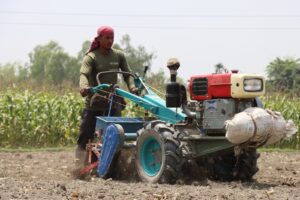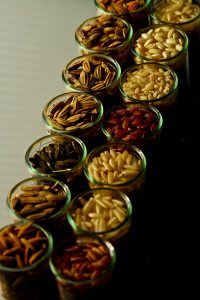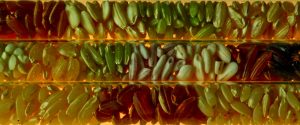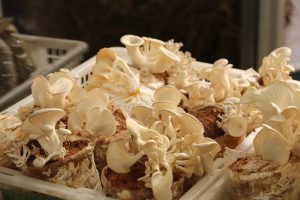Rice is grown throughout the southern United States, particularly in Arkansas, Louisiana, Mississippi, Missouri, Texas, Florida, and California. The U.S. ranks 11th in world rice production. Interestingly, according to the U.S. Department of Agriculture (USDA), the southern states have increased their rice area except for California. Arkansas and Missouri, in particular, have expanded their planted rice area by 12%, leading to an expected 4% increase in rice exports. In fact, USDA projects the total rice supply for the 2009-10 season will be 268.2 million cwt (13.41 million tons), which is 7% higher than the 2008-09 output. About 3.7 million cwt of the last season’s harvest was used as seed rice for 2009-10.
In growing rice, the field’s environment and the conditions during growth and harvest affect the quality of rice produced. So, farmers need to make sure that they begin the season right, starting with what type of seed to plant.
Determining the type of seed to plant can be a daunting task. Over the years, technological advancements through conventional breeding and genetic modification have significantly expanded the array of seeds for selection. However, one cannot simply choose seeds randomly. The need to meet the growing demand for food and the increase in plantings on marginal lands have placed great emphasis on seed quality. Seed quality and purity play a critical role in the crop’s success.
Because of this, testing methods have been developed to help evaluate seeds.
Standard germination methods for testing rice seed for both the Association of Official Seed Analysts (AOSA) and the International Seed Testing Association (ISTA) rules are similar and produce similar results. The AOSA seed testing methods are mainly used in the U.S. and are considered the basis for standard germination methods listed in the Federal Seed Act and placed on the seed label. ISTA testing methods, on the other hand, apply internationally and facilitate seed movement across borders. Standard germination places the seed in ideal growing conditions to determine the maximum germination potential of the seed. The acceptable growing medium is sand or a paper-based product. The incubation period is 14 days, and the temperature can be adjusted from 20 to 30 °C or kept constant at 25 °C (AOSA 2008). ISTA specifies some pretreatments to the seed to assist in breaking seed dormancy. These can be a 50 °C preheat period or a 24-hour presoak in water or potassium nitrate (ISTA 2009).
Rice vigor tests are used to help rank the seeds’ potential performance under less-than-ideal conditions. Typically, the seed is subjected to heat or cold stress. The accelerated aging test uses a measured quantity of seed on a screen, suspended above water in a plastic box. The sealed box is placed into a water-jacketed incubator preheated to 42 °C. The seed ages for 96 hours and reaches seed moisture of 30% (± 2%). Following heat stress, the seed is planted on top of moistened blotters, covered with sand and germinated for 7 days at temperatures alternating between 20 and 30 °C. In the cold test, the seed is planted on blotters saturated with water at 5 °C, and covered with a layer of prechilled sand. The seed stays in this condition for 7 days and is then transferred to a 30 °C incubation chamber for 5 days. Following the prescribed germination period, normal seedlings are evaluated.
Seed genetic purity can be evaluated using the Clearfield™ herbicide bioassay test or isoelectric focusing (IEF). The Clearfield rice herbicide test was developed to detect expression of a herbicide trait in a variety or hybrid to assure an acceptable level of trait purity. This test is a substrate imbibitions test with herbicide solution incorporated into the germination media. Seedlings are grown out and visually evaluated for tolerance of the herbicide. The herbicide concentration allows the nontrait seedling to grow and to express nontrait symptoms. A nontrait rice seedling reveals bent, shortened protective sheaths, blunted primary root, as well as spidery, blunted secondary roots.
IEF tests rice hybrid seed lots and individual seeds for varietal purity. It is an inexpensive and accurate separation by Amanda Patin method that splits proteins on the basis of their isoelectric points in a pH gradient. Known control samples, individual seeds, and parent control samples are evaluated to determine variety, female selfs, male selfs, and hybrid off-types. The rice seed is crushed and its proteins are extracted with 2% glycine solution. (Glycine extracts glutelins, which are structural proteins soluble in diluted alkali or acid solutions.) The extracted proteins are placed onto an agarose gel with a 4–5 pH range. The proteins are then pulled across the gel at an average of 50 watts for 80 minutes. The gel is stained with phosphohexose isomerase (PHI) enzyme. Different molecular components of the protein are detected according to their position in the gel. Banding patterns between varieties of rice differ greatly.
With each new development in rice, whether it be by traditional breeding methods or by genetic modification, a test method is necessary to evaluate the quality and purity of the seed. Methods to evaluate the purity of new products, such as nutrient enhancement products and new herbicide-tolerant varieties, are developed as the advancements approach the prelaunch stage of commercialization.
Various novel and standard seed amendment products applied t rice seed for protection from pests can affect seed quality. Rice seed treatment application, safety, and storage studies are performed to evaluate how chemicals affect seed physiology through time, using germination and vigor testing. Verification of appropriate treatment levels is also performed using two replicate subsamples from the submitted sample, which are extracted in an appropriate solvent by shaking or by applying sound energy. The amount of chemical treatment is determined by comparing the extracted sample to analytical standards using high-performance liquid chromatography (HPLC). A wide range of treatments from leading manufacturers are available for analysis. More are being developed.
Evaluating seed quality will help ensure that planted seeds grow well and provide good returns to farmers.
________________________________________
Ms. Patin works with the Seed and Crop Services of SGS North America










